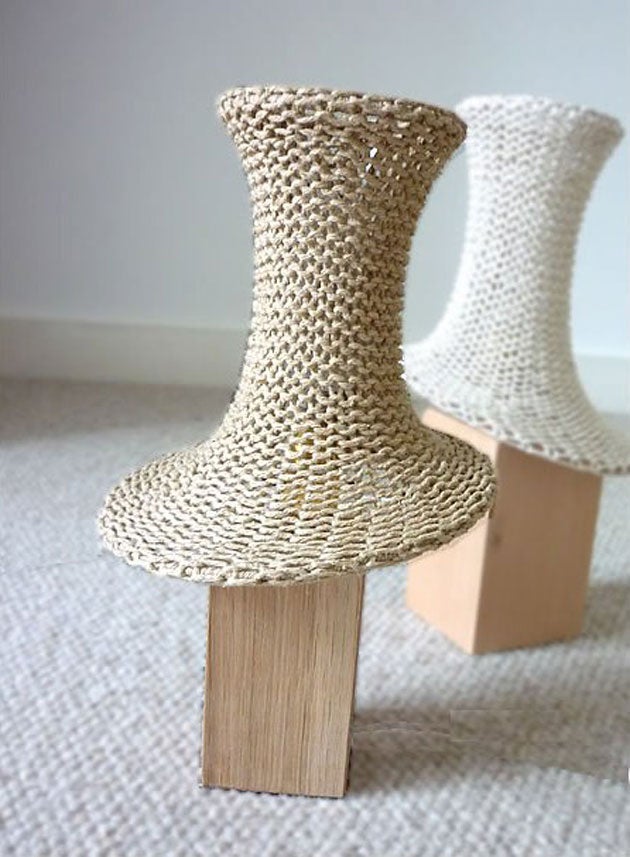Upcycling: is this eco trend here to stay?

In 1994, in an interview with Thornton Kay of Salvo, Reiner Pilz of German technology company, Pilz GmbH said of recycling, "I call it downcycling. They smash bricks, they smash everything. What we need is upcycling, where old products are given more value not less."
Search for the perfect furniture with The Independent house and home database, powered by mydeco.
Today, "upcycling" is the buzz word of the interiors and fashion industries, but, says Angus Middleton, director of environmental consultancy, Renaissance Regeneration and founder of ecoboom.co.uk, "it is often used wrongly as a sexy term for refurbishing old furniture, a bit like 'pre-loved' instead of second-hand, or 'modern antique' rather than junk. It should refer to taking the component parts of a redundant object and using them to create a new, useful object, thereby reducing the use of virgin materials."
While the PR-speak and corporate greenwash of some companies are to be avoided, there are increasing numbers of designers and makers who are upcycling for real. Helen Taylor of Ose Designs launched her hand-made, knitted lampshade business towards the end of last year as way of "making a difference to how some of our everyday objects impact on the environment."
Her lamps typify the upcycle movement with bases made from rescued pine floor joists, old lampshade frames and shades knitted from discarded Indian silk saris or recycled natural yarns.
Upcycling means that "sustainability is an inherent part of the object and the lifestyle it forms a part of," says Helen, but, she adds, it also stokes the creativity process, meaning "you see everyday things in a new way."
Seeing the potential of discarded or natural materials and developing them into cutting edge designs is something that has led Ryan Frank, a South African born furniture designer living and working in East London, to be dubbed a "free-range" designer.
Two of his most recent designs, a memorial bench for regeneration consultancy, Renaisi, and a giant farmhouse table for a private commission, were made after he discovered a stash of old scaffolding planks.
The boards, he commented, were "made from a good quality pine" and "full of character," resulting in "strong, sturdy, salvaged" furniture, which will, no doubt, last for years.
Ryan and Helen aren't the only ones embracing upcycling to great effect. Recently, American textile and product designer, Lori Weitzner of Weitzner Limited wove together strips of recycled newspapers to create a 100 per cent upcycled wallpaper, cleverly entitled "Newsworthy".
Meanwhile, in the latest Queen of Shops series on BBC 2, Mary Portas helped to revive the fortunes of Dazzle Parker and Denny Richardson's furniture business in Kingston, London, by advising them to stop competing with the big chains and make use of their creative and practical skills by upcycling furniture instead.
Upcycled objects are highly sustainable, original in design and cost reductive, but is this a trend that is here to stay and grow in the future?
Living, as we do, in a consumer society of many decades standing "there is huge institutional pressure internationally to encourage consumption," says Angus, pointing out that single-use consumables with a short life-span are what help to create constant growth in a capitalist economy. Cost is another issue.
"Clever design or use of robust and reusable components is expensive, and delivery delays to market would be little appreciated by the majority of the consuming public," says Angus, questioning, "Who do you know who has asked about the ability to maintain, repair or re-use an item while they were buying it?"
It's a good point. Until the consumer demands it, and mass-producers begin to get to grips with it, we are unlikely to see upcyling on a large, corporate scale any time soon (though we may see more greenwash from manufacturing companies trying to look eco).
That said, there's nothing to stop us doing a little upcycling of our own. Even if you're just reviving a second-hand piece of furniture with some Farrow & Ball paint or sticking bits of broken glass around a mirror, upcycling on a small scale still makes a difference, and the results might just surprise you.
Emily Jenkinson is interiors writer for furniture and interior design website mydeco.com.
Subscribe to Independent Premium to bookmark this article
Want to bookmark your favourite articles and stories to read or reference later? Start your Independent Premium subscription today.

Join our commenting forum
Join thought-provoking conversations, follow other Independent readers and see their replies